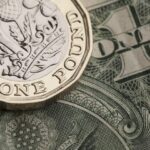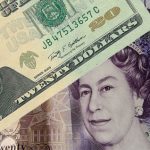Australian dollar advanced against its US dollar on trading Wednesday, following a report, which revealed Australian consumer price inflation surpassed expectations during the final quarter of 2013, implying a lower chance of an interest rate cut in the future.
AUD/USD climbed to a daily high at 0.8886 at 7:45 GMT, after which consolidation followed at 0.8876, surging 0.79% for the day. Support was likely to be received at January 21st low, 0.8776, while resistance was to be encountered at January 16th high, 0.8906.
According to a report by the Australian Bureau of Statistics, the index of consumer prices in the country rose more than initially projected during the fourth quarter of 2013, which lessened the probability that Reserve Bank of Australia may introduce a new cut in borrowing costs in the future. The CPI rose 0.8% in Q4 compared to Q3, while the annualized consumer inflation reached 2.7% in Q4. Preliminary estimates pointed that the index will climb 0.4% on a quarterly basis and 2.4% on annual basis. Figures confirmed that the annualized inflation remained in central banks inflation target range between 2% and 3%.
In August last year the central bank cut its benchmark to a new all-time low of 2.50%, which has been the eighth consecutive rate reduction since November 2011. The bank strives to overcome the negative effects for national economy, resulting from diminishing demand for raw materials by Australias largest export partner, China.
“This outcome obviously reduces the chances of another RBA rate cut,” Sean Callow, a Sydney-based currency strategist at Westpac Banking Corp. wrote in a note to clients after the consumer price data, cited by Bloomberg. The Australian currency may advance as high as 90.80 U.S. cents during the next days, in case it finishes today’s session above 88.70, according to Callow.
Traders saw a 23% probability that the Reserve Bank of Australia will reduce its benchmark interest rate from the current record low level of 2.50% by its policy meeting in June, according to swaps data compiled by Bloomberg News. The odds of such a move were 43% yesterday.
A separate report showed that consumer confidence in Australia decreased in January, which suggested that consumer expenditures probably still remained suppressed. A survey by Westpac Banking Corp. and Melbourne Institute revealed that the corresponding index of consumer confidence dropped 1.7% to reach a reading of 103.3 in January compared to a month ago. However, the index remained above the key level of 100.0, which separates optimism from pessimism.
Meanwhile, the Federal Open Market Committee (FOMC) will probably pare bond purchases by increments of 10 billion USD at each policy meeting and exit the program this year, according to the median estimate of experts participated in a survey by Bloomberg. The Committee is scheduled to hold a meeting next on January 28th-29th.
Elsewhere, the Aussie was advancing against the euro, with EUR/AUD cross falling 0.94% on a daily basis to trade at 1.5259 at 9:42 GMT. AUD/NZD pair was gaining 0.67% to trade at 1.0665 at 9:43 GMT.





